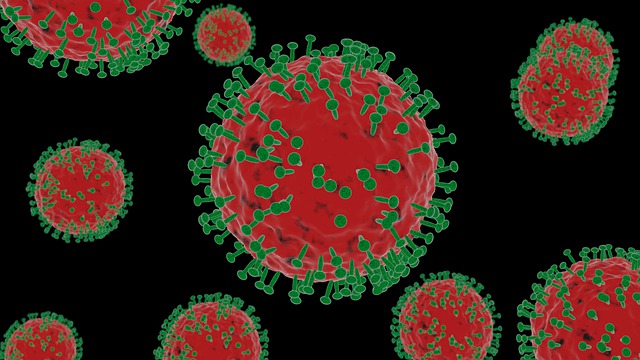Post-acute sequelae of severe acute respiratory syndrome coronavirus 2 (SARS-CoV-2), the virus that causes coronavirus disease 2019 (COVID-19), can affect pulmonary and extrapulmonary organs, including the cardiovascular system .
Some studies have investigated cardiovascular outcomes in the post-acute phase of COVID-19; however, most were limited to hospitalized people (representing the minority of people with COVID-19), and all had a short follow-up duration and a limited selection of cardiovascular outcomes .
A comprehensive assessment of post-acute sequelae of COVID-19 of the cardiovascular system at 12 months is not yet available, and studies of post-acute sequelae of COVID-19 across the spectrum of acute care settings (non-hospitalized , hospitalized and admitted to intensive care) are also missing. Addressing this knowledge gap will inform post-acute COVID-19 care strategies.
Summary
The cardiovascular complications of acute coronavirus disease 2019 (COVID-19) are well described, but the post-acute cardiovascular manifestations of COVID-19 have not yet been comprehensively characterized.
Here we used national healthcare databases from the US Department of Veterans Affairs to create a cohort of 153,760 people with COVID-19, as well as two sets of control cohorts with 5,637,647 (contemporaneous controls) and 5,859 .411 (historical controls) people, to estimate 1-year risks and burdens from a set of prespecified incident cardiovascular outcomes.
We show that, beyond the first 30 days after infection, people with COVID-19 have an increased risk of incident cardiovascular disease spanning several categories, including cerebrovascular disorders, arrhythmias, ischemic and non-ischemic heart disease, pericarditis, myocarditis, heart failure and thromboembolic disease.
These risks and burdens were evident even among people who were not hospitalized during the acute phase of infection and increased gradually depending on the care setting during the acute phase (not hospitalized, hospitalized, and admitted to intensive care).
Our results provide evidence that the 1-year risk and burden of cardiovascular disease in survivors of acute COVID-19 are substantial.
Care pathways for those who survive the acute episode of COVID-19 should include care for cardiovascular health and disease.
Mechanisms, pathophysiology
The mechanism(s) underlying the association between COVID-19 and the development of cardiovascular disease in the post-acute phase of the disease is not entirely clear .
Putative mechanisms include persistent damage by direct viral invasion of cardiomyocytes and subsequent cell death, infection of endothelial cells and endotheliitis, transcriptional alteration of multiple cell types in cardiac tissue, complement activation, and complement-mediated coagulopathy and microangiopathy. ACE2 downregulation and renin dysregulation. –angiotensin-aldosterone system, autonomic dysfunction, elevated levels of proinflammatory cytokines, and activation of TGF-β signaling through the Smad pathway to induce subsequent fibrosis and scarring of cardiac tissue .
An aberrant persistent hyperactivated immune response , autoimmunity, or viral persistence at immune-privileged sites have also been cited as putative explanations for the post-acute extrapulmonary (including cardiovascular) sequelae of COVID-19 .
The integration of the SARS-CoV-2 genome into the DNA of infected human cells, which could then be expressed as chimeric transcripts that fuse viral with cellular sequences, has also been proposed as a putative mechanism for the continuous activation of the immune cascade. inflammatory-procoagulant .
These mechanistic pathways could explain the range of post-acute cardiovascular sequelae of COVID-19 investigated in this report. A deeper understanding of biological mechanisms will be needed to inform the development of prevention and treatment strategies for cardiovascular manifestations among people with COVID-19.
Our analyzes that censor participants at the time of vaccination and control for vaccination as a time-varying covariate show that the increased risk of myocarditis and pericarditis reported in this study is significant in people who were not vaccinated and is evident regardless of vaccination status.
In summary , using a national cohort of people with COVID-19, we show that the 12-month risk and burden of incident cardiovascular disease is substantial and spans several categories of cardiovascular disease (ischemic and non-ischemic heart disease, arrhythmias, and others).
The risks and burdens of cardiovascular disease were evident even among those whose acute COVID-19 did not require hospitalization. Care pathways for people who survived the acute episode of COVID-19 should include health care and cardiovascular disease.
Implications The broader implications of these findings are clear. Cardiovascular complications have been described in the acute phase of COVID-19. Our study shows that the risk of incident cardiovascular disease extends well beyond the acute phase of COVID-19. First, the findings emphasize the need for continued optimization of strategies for the primary prevention of SARS-CoV-2 infections; That is, the best way to prevent long COVID and its myriad complications, including the risk of serious cardiovascular sequelae, is to prevent SARS-CoV-2 infection in the first place. Second, given the large and growing number of people with COVID-19 (more than 72 million people in the United States, more than 16 million people in the United Kingdom, and more than 355 million people worldwide) , the 12-month risks and burdens of cardiovascular disease reported here could translate into large numbers of people potentially affected worldwide. Governments and health systems around the world must be prepared to address the likely significant contribution of the COVID-19 pandemic to the increasing burden of cardiovascular disease. Due to the chronic nature of these conditions, they are likely to have long-lasting consequences for patients and health systems and also have broad implications for economic productivity and life expectancy. Addressing the challenges posed by Long COVID will require a much-needed, but so far non-existent, urgent and coordinated long-term global response strategy. |
















